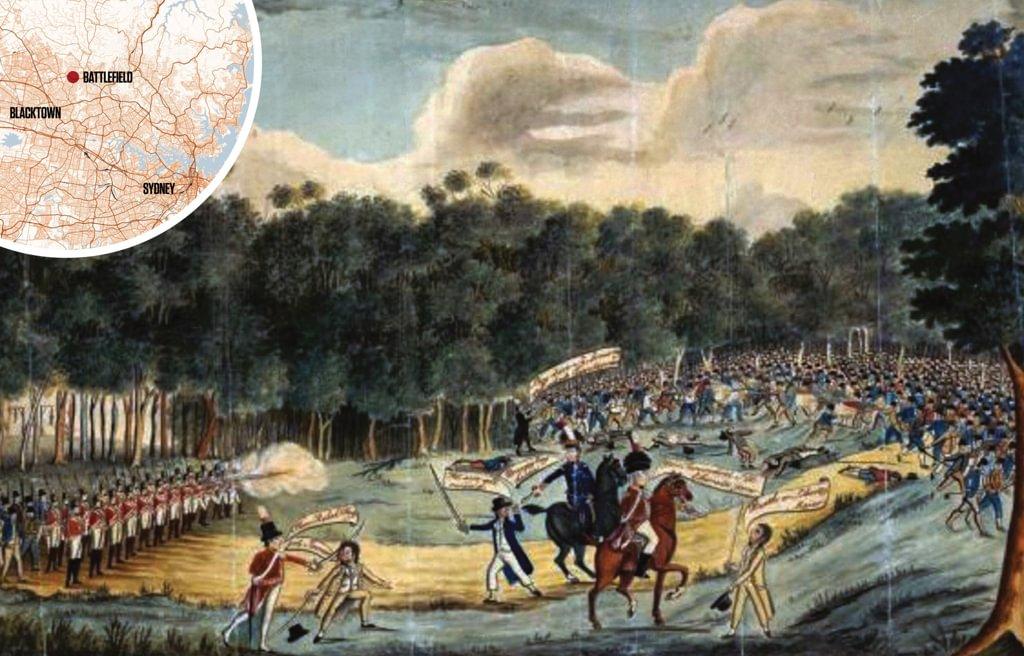
The anonymous 1804 painting now in the National Library of Australia showing the various details of the battle and its aftermath
On 5 March 1804, a group of 233 convict rebels who had revolted against their incarceration in the British colony of New South Wales (corresponding to modern-day Sydney, Australia) were met by the local garrison of 28-30 regulars and a few loyalist militia. The two groups clashed at a place some 25 miles (40km) northwest of Sydney, soon dubbed Vinegar Hill. Some of the rebel convicts had been involved in the 1798 Irish Rebellion and had, in 1799, been transported to Australia as punishment. The battle in Australia was named after the Battle of Vinegar Hill (in Irish Cath Chnoc Fhíodh na gCaor) that had been fought in June 1798 in County Wexford, where British forces had defeated the Irish rebels. Although the Irish battle had not been decisive in the crushing of the rebellion, as is sometimes claimed, the battle in Australia was indeed decisive and quickly ended the Australian rebellion. This was the first and most serious convict uprising in Australia and the first battle between Europeans on its shores.
Although the exact location of the battle is still debated, it most likely took place at Rouse Hill, further to the northwest and close to the important region in the colony known as Castle Hill (the rebellion is also known as the Castle Hill Rebellion). These were the hills six miles (10km) north of Parramatta (the site of the governor of the colony’s residence, Government House) and where government farms had been established early in the colony’s history in the